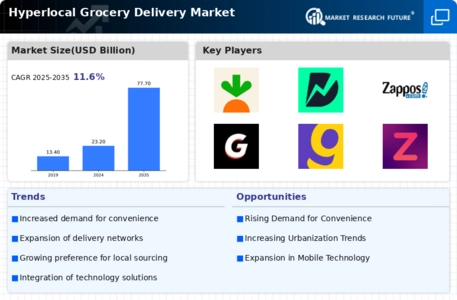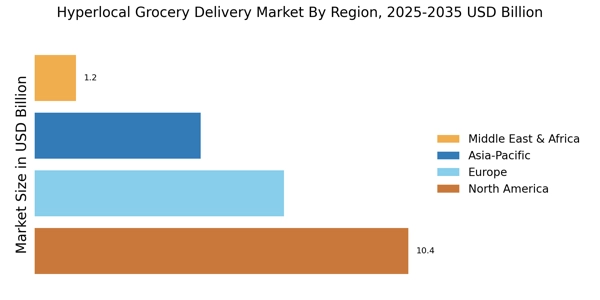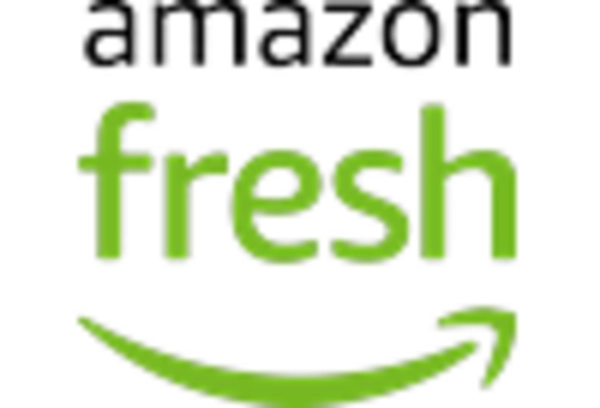Rising Urbanization
The trend of increasing urbanization appears to be a pivotal driver for the hyperlocal grocery delivery Market. As more individuals migrate to urban areas, the demand for convenient grocery delivery services intensifies. Urban dwellers often lead busy lifestyles, which necessitates quick and efficient access to groceries. According to recent data, urban populations are projected to reach 68% by 2050, further amplifying the need for hyperlocal delivery solutions. This demographic shift suggests that grocery delivery services must adapt to cater to the preferences of city residents, who prioritize convenience and speed. Consequently, businesses in the Hyperlocal Grocery Delivery Market are likely to invest in logistics and technology to meet this growing demand.
Sustainability Concerns
Sustainability concerns are increasingly shaping the dynamics of the Hyperlocal Grocery Delivery Market. Consumers are becoming more aware of the environmental impact of their purchasing decisions, leading to a demand for eco-friendly packaging and sustainable sourcing practices. This shift is prompting grocery delivery services to adopt greener practices, such as reducing plastic use and optimizing delivery routes to minimize carbon footprints. Market Research Future indicates that a significant portion of consumers prefer brands that demonstrate a commitment to sustainability. As a result, businesses in the Hyperlocal Grocery Delivery Market may find that integrating sustainable practices not only meets consumer expectations but also enhances brand loyalty and market competitiveness.
Technological Integration
Technological advancements are reshaping the landscape of the Hyperlocal Grocery Delivery Market. The integration of mobile applications, artificial intelligence, and data analytics is enhancing the efficiency and effectiveness of delivery services. For instance, AI-driven algorithms can optimize delivery routes, reducing delivery times and costs. Furthermore, the use of mobile apps allows consumers to place orders seamlessly, track deliveries in real-time, and receive personalized recommendations. As technology continues to evolve, it is expected that the Hyperlocal Grocery Delivery Market will witness increased investment in tech-driven solutions, which could lead to improved customer experiences and operational efficiencies.
Health and Wellness Trends
The growing emphasis on health and wellness is influencing consumer choices in the Hyperlocal Grocery Delivery Market. As individuals become more health-conscious, there is a rising demand for fresh, organic, and locally sourced products. This trend is prompting grocery delivery services to expand their offerings to include healthier options, catering to the preferences of health-oriented consumers. Market data suggests that the organic food segment is experiencing substantial growth, with consumers willing to pay more for products that align with their health goals. Consequently, businesses in the Hyperlocal Grocery Delivery Market are likely to adapt their inventory and marketing strategies to capitalize on this trend.
Evolving Consumer Preferences
Consumer preferences are evolving, with a marked shift towards online shopping and delivery services. This trend is particularly pronounced in the Hyperlocal Grocery Delivery Market, where consumers increasingly favor the convenience of having groceries delivered to their doorsteps. Recent surveys indicate that a significant percentage of consumers express a willingness to pay a premium for delivery services that save time and effort. This shift in consumer behavior suggests that businesses must adapt their offerings to align with these preferences, potentially leading to increased competition among providers. As a result, the Hyperlocal Grocery Delivery Market is likely to see innovations in service delivery, product offerings, and customer engagement strategies to attract and retain customers.


















Leave a Comment